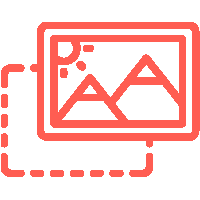
If your first child started Year 7 this September, chances are you were 27 years old when they were born. At least that is the average age that first-time parents were in 2011 when their first born child came into the world. If this is the case, then you yourself went into Year 7 back in 1996 and when you sit opposite you child’s teacher today you will be right to say “It’s all changed since my day”.
As a parent you will have already experienced the change at primary level. Your Key Stage 2 SATs involved you taking a test paper and maybe even the extension paper in each of English, Mathematics and Science for which you were awarded a level. You were the first cohort to have the SATs results of your school published in a league table for primary schools. As you will know however, levels no longer exist and Year 7 today start secondary school having taken tests in English grammar, punctuation and spelling, English reading and Mathematics. The results of each test are used to decide whether a student has achieved the expected standard or not. What does remain the same is the publishing of the results in a league table.
The use of levels was abolished in 2014 when the latest national curriculum became statutory. This gave schools the freedom to assess Key Stage 3 in a manner appropriate to the school. Whilst the majority of schools follow the national curriculum at Key Stage 3 (academies can create their own curriculum), there are no SATs in English, Mathematics and Science or teacher assessed levels awarded at the end of the Key Stage. It maybe that a school has chosen to retain the terminology “level” to describe how a student is performing but is unlikely that students in Year 7 will ever hear themselves described as a 4b or 5c. The mechanism for assessment used at Key Stage 3 is dependent on the school and/or the academy trust the school belongs to: this makes comparing schools in terms of their effeciveness in Key Stage 3 difficult. In terms of the subjects that comprise the curriculum, they remain largely the same although Computing replaced IT in 2014 (to reflect the content change in favour of coding) and the inclusion of Citizenship back in 2002 (although often included within a schools interpretation of Personal, Social and Health Education).
When you started your GCSE courses in 1999 you knew you would be ultimately graded from A*-G. The same examination boards existed then as do now, but coursework in addition to exams featured in the assessment of many subjects. English, for example, saw written coursework account for 20% of your final overall grade. In Science, the coursework componant made up 25% of your final grade for your Double Award GCSE. You may have had the option to and consequently did take Biology, Chemisty and Physics to GCSE but this didn’t become an entitlement until 2006. Double Award was the only route for the majority, where examinations in Biology, Chemistry and Physics, each worth 25% along with the coursework componant awarded you with two grades for Double Science at GCSE (the course being worth two GCSE’s). In 2022 coursework no longer features in the final grading of GCSEs. Everything rests on terminal examination papers that are graded 9-1. Tiering (ie the option of taking higher or foundation) only exists for Mathematics, Science and Modern Foreign Languages. Double Award Science is now called Combined Science and in many schools the option to do Triple Science remains.
Whilst the subjects on offer overall for GCSE remain largely the same albeit presented in a different package, options to take those different subjects is affected by the current performance measures in place for schools. The days of school performance being measured by the percentage of students achieving 5+ GCSEs graded A*-C have gone, and the latest set of measures have been in place since 2016. Whilst achieving 5+ GCSEs graded 9-4 remains the goal for an individual student in terms of best supporting their life chances, for a school to be deemed successful performance is judged on how well students have achieved in a range of subjects against how well their peers have performed across the same range. This involves the filling of 8 GCSE “buckets”: buckets 1 and 2 are for English and mathematics, buckets 3-5 are for English Baccaulareate subjects and buckets 6-8 are for other subjects that are eligible to be counted in the performance tables. The English Baccaulareate subjects include GCSE Combined Science, Biology, Chemistry, Physics, Computer Science, Geography, History and any Modern of Ancient Foreign Language. If within their choices a student opts to take science, geography or history and a modern language in addition to English and mathematics they have fulfullied the requirement for the English Baccalaureate in its own right (not that they recieve any official recognition for this other than the knowing).
So, to summarise, school has changed in years since the parent left and the child started, the degree of change depending on the length of the gap. Has the change been worth it? That isn’t for this post to comment on. However, I do ask you to consider a wrapped sweet as an analogy for an 11 year old in the education system – you can change the wrapper but the sweet inside remains the same. An 11 year old is still an 11 year old whether it is 1996 or 2022, so what has the really change achieved?







